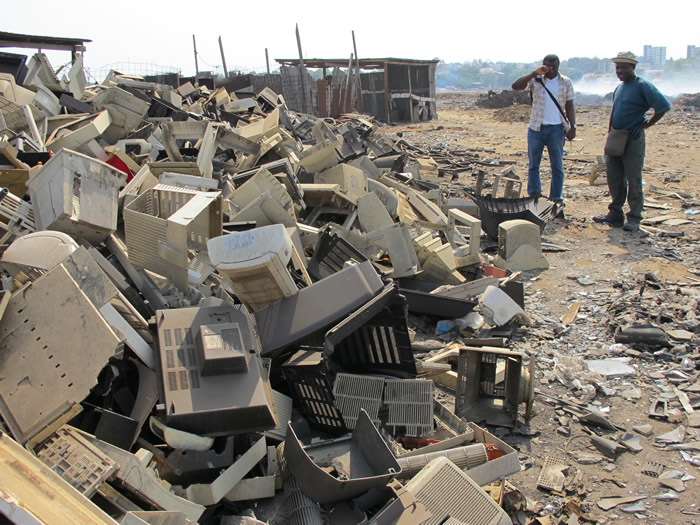
Mostly, they end up buried in landfills or burned in incinerators, poisoning our land, air and water with toxic heavy metals.
"Electronic waste isn't just waste -- it contains some very toxic substances, such as mercury, lead, cadmium, arsenic, beryllium and brominated flame retardants," according to the organization e-Stewards. "When the latter are burned at low temperatures, they create additional toxins, such as halogenated dioxins and furans -- some of the most toxic substances known to humankind."
And while Apple says it has removed flame retardants from its products, there is no real way to remove toxic heavy metals that are essential for the functioning of batteries and circuit boards.
Heavy metals such as those contained in Apple's products are elements, meaning that they can never be broken down into less toxic forms. That's part of what makes infamous toxins such as arsenic, mercury and lead so insidious. Many of these metals, like the three mentioned above, also accumulate in the body or environment over time. They have been linked to health complaints as severe as cancer, endocrine disruption, reproductive disorders and brain damage.
Toxic metals included in Apple's products include cadmium, lead, lithium and nickel in batteries; lead in wiring boards; arsenic in light emitting diodes; beryllium in power supply boxes; mercury in LCD monitors and some batteries; and rare earth elements in microchips.
Very few of these toxic elements are responsibly reclaimed when a product reaches the end of its life. In the United States, 70 percent of e-waste is simply dumped into landfills. That includes about 30 million computers per year. In Europe, 100 million cell phones are discarded annually.
Other sources of e-waste include tablets, office electronics, televisions and other entertainment devices. Globally, they add up to about 50 million tons of e-waste each year. This amount is expected to balloon as everyday devices continue to become more computerized and information technology continues to spread around the world.
But what about the 25-30 percent of e-waste that gets "recycled?" As it turns out, most of that e-waste still ends up in incinerators or contaminating local water supplies. But most of that contamination (70-80 percent) is "outsourced" by the wealthy world to poorer countries in Asia and Africa.
E-waste "recycling" practices in China, India and Pakistan typically involve practices such as riverside acid baths to leach out a small fraction of the rare metals contained in electronics. This produces significant water contamination. The rest of the "recycled" product is usually dumped or incinerated.
A Greenpeace report found that an e-waste "recycling" site in Ghana consisted mostly of an incineration site found to contain "severe contamination with hazardous chemicals."
"In the yards, unprotected workers, many of them children, dismantle computers and TVs with little more than stones in search of metals that can be sold. The remaining plastic, cables and casing [are] either burnt or simply dumped," the report reads. "Some of the samples contained toxic metals including lead in quantities as much as one hundred times above background levels."
Of course, Apple is not the only source of dangerous e-waste. The average US household contains 24 electronic devices, of which only a fraction are made by Apple.
As our society becomes increasingly high-tech, e-waste is a problem that will need to be grappled with. In a 2010 study, Dustin Mulvaney of the University of California-Berkeley warned that the supposedly "green" industry of solar panels is poised to become a major source of toxic e-waste. Because solar panels have a lifespan of 20 years, manufacturers have given little thought to recycling or disposing of them. But breakage is already causing the waste to pile up, and a projected explosion in solar panels may give us a new e-waste crisis a few decades down the line.
Sources:
Please contact us for more information.






















